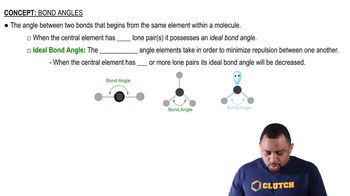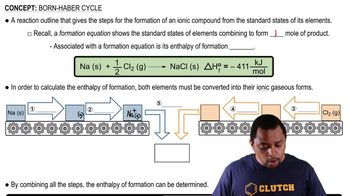Here are the essential concepts you must grasp in order to answer the question correctly.
Hybridization
Hybridization is a concept in chemistry that describes the mixing of atomic orbitals to form new hybrid orbitals, which can explain the geometry of molecular bonding. In oxaloacetic acid, the carbon atoms can exhibit different hybridizations, such as sp2 for those involved in double bonds and sp3 for those with single bonds. Understanding hybridization helps predict the shape and bond angles of the molecule.
Recommended video:
Bond Angles
Bond angles are the angles formed between adjacent bonds in a molecule, which are influenced by the hybridization of the atoms involved. For example, sp3 hybridized carbons typically have bond angles of about 109.5 degrees, while sp2 hybridized carbons have bond angles of approximately 120 degrees. Knowing the bond angles is crucial for understanding the three-dimensional structure of molecules like oxaloacetic acid.
Recommended video:
Citric Acid Cycle
The citric acid cycle, also known as the Krebs cycle, is a key metabolic pathway that involves a series of chemical reactions used by all aerobic organisms to generate energy. Oxaloacetic acid plays a vital role as an intermediate in this cycle, combining with acetyl-CoA to form citric acid. Understanding this cycle provides context for the importance of oxaloacetic acid in cellular respiration and energy production.
Recommended video:
 McMurry 8th Edition
McMurry 8th Edition Ch.8 - Covalent Compounds: Bonding Theories and Molecular Structure
Ch.8 - Covalent Compounds: Bonding Theories and Molecular Structure Problem 64
Problem 64
 Verified step by step guidance
Verified step by step guidance


